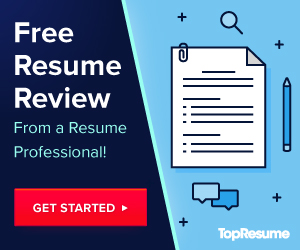Finding out information about other people is much easier than it used to be. Professionals are now going to great lengths to create a personal brand online.
For example, many people have purchased their own name as a domain and use the space for a portfolio, online resume or personal blog. Domain names are relatively inexpensive and it might be worth the cost to show prospective employers what you have to offer. A personal website can expand upon what you fit into your resume and may be particularly beneficial for people who are seeking jobs in design, art, and technology fields to showcase their work.
Whether you decide to create your own website or not, make sure your online presence is consistent. One of the best ways to do this is to search for your name online and see what results come up. If there are search results that are not appropriate for employers’ eyes, take action to fix those items.
Be aware that anything you post online could be in the public domain. If you’re posting comments or images online, they may be visible to prospective employers.
Online postings can be used for positive messages, too. For example, you can show your expertise in a certain area by posting comments on other people’s blogs or creating your own. Consider subscribing to blogs and website feeds that offer tips for the industry in which you want to work and in your area of study. You’re likely to learn something new and you may have an opportunity to engage with others in your field by posting comments and being a part of an online community.
If you don’t have a LinkedIn account, sign up for the free version and post your resume. Once you have an account, you’ll have an opportunity to join groups of similar professionals. There may also be groups that cater to people who work for certain companies, people who attended your college, various areas of interest, and more.
The groups allow users to post their own questions, as well as respond to questions others have posted. This is yet another way to become a part of an online community and network with people with whom you wouldn’t ordinarily be in contact.
Once you have your offer letter in hand and all of the details of your employment have been confirmed, you should update your profile to reflect your new position. This information will show up in the status updates section of your fellow connections.
If you’re concerned about how to build your network within LinkedIn, think about sending connection requests to current and former professors. It is also wise to connect with classmates and stay in touch with them as their careers (and yours) progresses. You never know when you might be in need of a contact at a particular company, a reference or a new job opportunity.
Google allows you to set up an alert that will email you any time your name shows up online. It’s not fool-proof, but the free service does pick up the vast majority of instances your name is in the media. If you have a common name, you may need to define your search criteria to include the city where you live.
Photo Credit: Shutterstock











